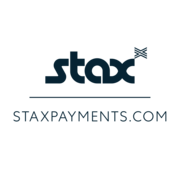
Best Payment Facilitation Tools 2026
What are Payment Facilitation Tools Payment facilitation tools are software solutions that enable organizations to act as a payment facilitator, allowing them to onboard and process payments on behalf of their customers. This technology is primarily used by businesses, financial institutions, and payment service providers (PSPs) that want to offer their customers a simplified and streamlined payment experience. The main goal of payment facilitation tools is to help organizations enhance their ...
We’ve collected videos, features, and capabilities below. Take me there.
All Products
Learn More about Payment Facilitation Software
What are Payment Facilitation Tools
Payment facilitation tools are software solutions that enable organizations to act as a payment facilitator, allowing them to onboard and process payments on behalf of their customers. This technology is primarily used by businesses, financial institutions, and payment service providers (PSPs) that want to offer their customers a simplified and streamlined payment experience.
The main goal of payment facilitation tools is to help organizations enhance their payment processing capabilities and provide a more seamless and integrated payment experience for their customers. By becoming a payment facilitator, organizations can streamline the onboarding process, speed up the time to market, and generate additional revenue streams through payment processing fees.
Payment facilitation tools are closely related to payment gateway software, as both types of software enable organizations to accept and process payments with retail and eCommerce platforms. However, while payment gateways focus on providing the infrastructure to securely transmit payment data between the customer, merchant, and financial institutions, payment facilitation tools offer a more comprehensive solution that includes the ability to onboard sub-merchants, manage underwriting and compliance, and settle funds. Payment facilitation tools also differ from point-of-sale systems (POS) in that Payment facilitation tools provide comprehensive payment solutions for online businesses, whereas point-of-sale (POS) systems focus on facilitating in-person transactions at physical business locations.
Key Features of Payment Facilitation Tools
Most products in the Payment Facilitation Tools have the following features:
- Payment onboarding: Simplify the process of onboarding sub-merchants by automating the underwriting and Know Your Customer (KYC) processes. This includes collecting and verifying relevant information such as business registration, tax IDs, and bank account details.
- Underwriting and risk management: Assess the risk associated with each sub-merchant based on criteria such as credit history, fraud risk, and industry type. This helps organizations ensure compliance with regulatory requirements and mitigate potential financial risks.
- Sub-merchant account management: Manage sub-merchant accounts, including account creation, updates, and closures. This includes the ability to track transaction activity, view settlement reports, and manage chargebacks.
- Payment processing: Facilitate the processing of payments for sub-merchants by integrating with multiple payment processors and acquirers. This enables organizations to offer various payment methods, including credit/debit cards, e-wallets, and alternative payment methods.
- Settlement and reconciliation: Automate the process of settling funds to sub-merchants and reconciling transaction data. This includes generating settlement reports, handling refunds, and managing disputes and chargebacks.
- Reporting and analytics: Gain insights into payment activities, transaction volumes, and financial performance through detailed reporting and analytics. This helps organizations monitor key performance indicators and make data-driven business decisions.
Considerations for Potential Buyers
Scalability: Consider whether the payment facilitation tool can handle your organization's current and future payment processing needs. Ensure that the software is capable of supporting a growing number of sub-merchants and transaction volumes without impacting performance.
Integration capabilities: Evaluate the tool's ability to integrate with your existing systems and infrastructure, such as accounting software, customer relationship management (CRM) tools, and e-commerce platforms. Seamless integration can streamline operations and improve overall efficiency.
Compliance and security: Look for payment facilitation tools that adhere to relevant regulatory standards, such as Payment Card Industry Data Security Standard (PCI DSS) compliance. Ensure that the software places a strong emphasis on data security and fraud prevention to protect sensitive customer information.
User experience: User-friendly interfaces and intuitive workflows can greatly enhance the usability of payment facilitation tools. Consider software that offers a clean and intuitive interface to simplify the onboarding process for both your organization and your sub-merchants.
Pricing Information
Pricing for payment facilitation tools can vary depending on the specific features and capabilities of the software, as well as the size and needs of the organization. Pricing models can vary, ranging from monthly subscriptions to transaction-based fees or a combination. Higher-priced plans often include advanced features and additional support options.
When considering the pricing of payment facilitation tools, it is essential to closely evaluate the value and return on investment the software can provide, as well as the scalability and long-term cost implications for your organization. Some vendors may offer free trials or provide pricing details upon request is recommended to contact vendors directly to discuss pricing options.














